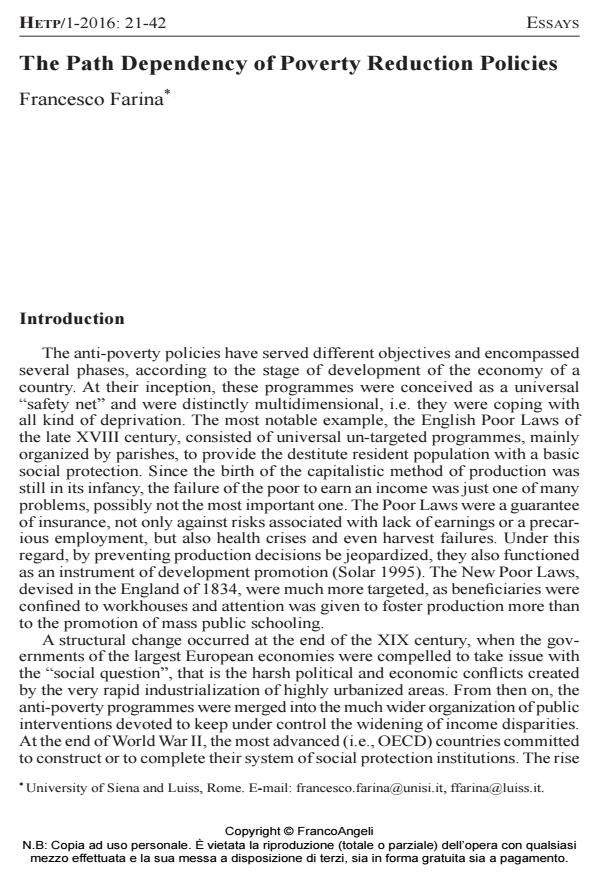The Path Dependency of Poverty Reduction Policies
Journal title HISTORY OF ECONOMIC THOUGHT AND POLICY
Author/s Francesco Farina
Publishing Year 2016 Issue 2016/1
Language English Pages 22 P. 21-42 File size 196 KB
DOI 10.3280/SPE2016-001002
DOI is like a bar code for intellectual property: to have more infomation
click here
Below, you can see the article first page
If you want to buy this article in PDF format, you can do it, following the instructions to buy download credits

FrancoAngeli is member of Publishers International Linking Association, Inc (PILA), a not-for-profit association which run the CrossRef service enabling links to and from online scholarly content.
The evolutionary paths followed by poverty reduction policies in the advanced and in the developing countries have been quite different. The paper endorses the view whereby the higher is the initial level of income inequality in a country, the less the subsequent GDP growth is bound to "trickle down" to the poor. Due to the perverse interplay between growth, income inequality and inequality of opportunity, the tight correlation between material and non-material conditions of life often prevents low-income countries to reduce the size and the intensity of poverty. After the low-income countries’ involvement in globalization, the construction of indices of multidimensional poverty is taken as decisive by international organizations to carefully design anti-poverty aid policies by taking into account the specific characteristics of the area of intervention.
Keywords: Poverty, inequality, welfare state, international aid
Jel codes: I31, I38, D63,P36
Francesco Farina, The Path Dependency of Poverty Reduction Policies in "HISTORY OF ECONOMIC THOUGHT AND POLICY" 1/2016, pp 21-42, DOI: 10.3280/SPE2016-001002